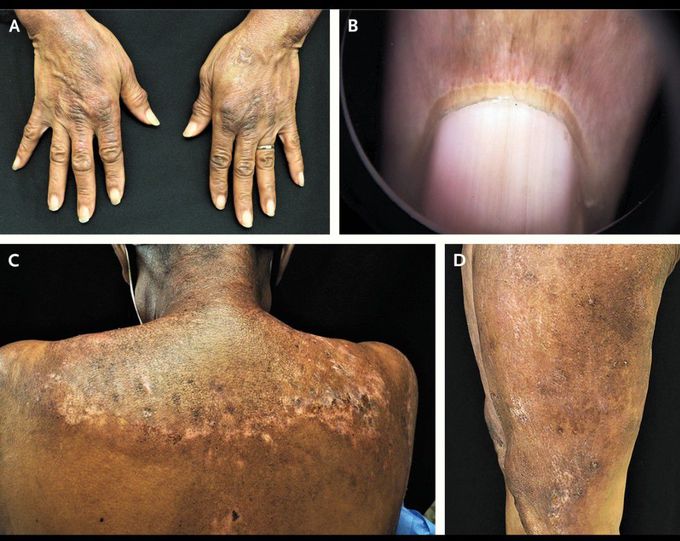


Dermatomyositis
A 66-year-old woman presented to the outpatient clinic with a 7-month history of pruritic rash. She had previously received a diagnosis of eczema and received treatment with topical glucocorticoids, without improvement. She also reported fatigue, shortness of breath, and muscle weakness. The results of physical examination were noteworthy for the presence of hyperpigmented, erythematous papules overlying the metacarpophalangeal and interphalangeal joints of both hands, findings consistent with Gottron’s papules (Panel A); dilated capillaries of the proximal nail folds (Panel B); dyschromic patches, plaques, and poikiloderma on the posterior shoulders, findings consistent with the shawl sign (Panel C); and poikilodermatous, dyschromic changes of the lateral thighs, a finding consistent with the Holster sign (Panel D). The strength in the proximal arms and legs was 3 out of 5. A diagnosis of dermatomyositis was made. Given the association between dermatomyositis and certain cancers, the patient was evaluated for underlying cancer. The results of the evaluation were negative. Depending on dermatologic skin type, the rash in patients with dermatomyositis can have varied presentations, including hyperpigmentation and dyschromia or marked erythema with violaceous changes. A 3-month course of mycophenolate mofetil, intravenous immune globulin, and prednisone was initiated, and the glucocorticoids were tapered during this time. The patient had resolution of the dyspnea, weakness, and cutaneous findings.

